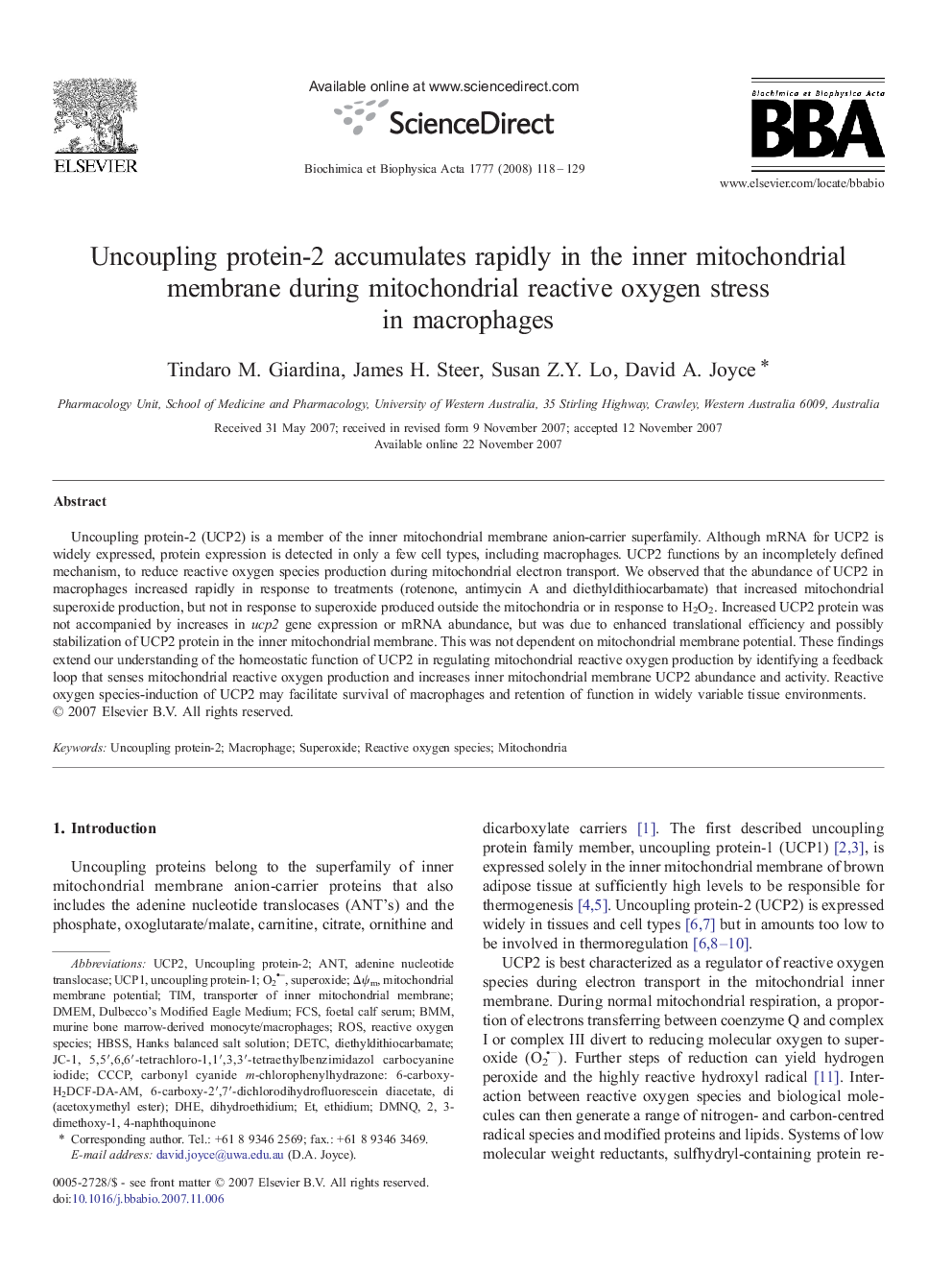| Article ID | Journal | Published Year | Pages | File Type |
|---|---|---|---|---|
| 1943413 | Biochimica et Biophysica Acta (BBA) - Bioenergetics | 2008 | 12 Pages |
Uncoupling protein-2 (UCP2) is a member of the inner mitochondrial membrane anion-carrier superfamily. Although mRNA for UCP2 is widely expressed, protein expression is detected in only a few cell types, including macrophages. UCP2 functions by an incompletely defined mechanism, to reduce reactive oxygen species production during mitochondrial electron transport. We observed that the abundance of UCP2 in macrophages increased rapidly in response to treatments (rotenone, antimycin A and diethyldithiocarbamate) that increased mitochondrial superoxide production, but not in response to superoxide produced outside the mitochondria or in response to H2O2. Increased UCP2 protein was not accompanied by increases in ucp2 gene expression or mRNA abundance, but was due to enhanced translational efficiency and possibly stabilization of UCP2 protein in the inner mitochondrial membrane. This was not dependent on mitochondrial membrane potential. These findings extend our understanding of the homeostatic function of UCP2 in regulating mitochondrial reactive oxygen production by identifying a feedback loop that senses mitochondrial reactive oxygen production and increases inner mitochondrial membrane UCP2 abundance and activity. Reactive oxygen species-induction of UCP2 may facilitate survival of macrophages and retention of function in widely variable tissue environments.
